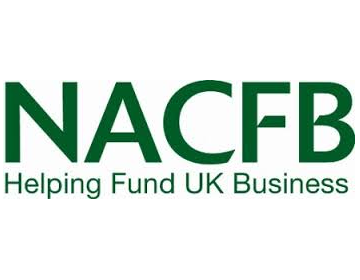The UK desperately needs more affordable housing, new and innovative home ownership schemes, flexible tenures, and further mortgage production innovation.
To arrive at these recommendations, leading advisors, made up of the largest mortgage intermediaries in the PMS Mortgage Club, were joined by representatives from Nationwide and Kensington to debate the three predominant barriers to homeownership that first-time buyers face.
Raising a deposit
It is no secret that times are tough, and if it wasn’t challenging to raise a deposit in the past, it certainly is now. First-time buyers have now become increasingly reliant on the Bank of Mum and Dad, and this issue crept up last year when it was estimated that 49% of all first-time buyer purchases were propped up by cash from parents.
This figure escalated from 43% in 2020 and 39% in 2019, and it’s no shock to see why. Between 2005 to 2021, the average first-time buyer deposit grew two and a half times, thus increasing from £24,600 to £62,600. In the capital, required deposits have risen almost fourfold from £42,500 to £159,300 respectively.
The current advice options for brokers are, unfortunately, limited, and unappealing; save more, rely on parents, move up the loan to value (LTV) curve, find a cheaper house or relocate to a more affordable region.
To get a more realistic understanding of what can be borrowed and how much needs to be saved, first-time buyers will have better odds of getting ahead on the property ladder if they seek advice from brokers, which is preferable to searching for properties without first taking advice, only to find you can’t afford the price tag.
Andy Dean, head of intermediary support and new build at Nationwide Building Society, has weighed in on the matter and said: “First-time buyers are the lifeblood of the housing market. As the UK’s biggest building society and second-largest lender, we’re always looking for ways to help those who need the most support because helping people into their first home is at the heart of what we do.”
“With our low deposit mortgages and Helping Hand, we are doing what we can to tackle these challenges and it’s great to see the Industry Panel for Financial Advice also use their considerable expertise and influence to bring about a positive change.”
Other potential solutions also include schemes and alternative tenures; however, they are not universally suitable and most exclude second-hand stock reducing their ability to serve most of the market.
Affordability pressures
The average loan to income (LTI) multiple for first-time buyers back in 2005 was 3.09 times earnings with capital and interest mortgage payments accounting for 21.1% of total household income.
Now, fast forward to 2022, the average LTI multiples have achieved a record high of 3.58 times earnings, yet mortgage payments as a percentage of household income have declined to 17.6%, therefore reflecting the unprecedented low cost of borrowing, now under pressure again as rates start to rise.
Compounding this issue are rules regarding maximum lender exposure to high LTI lending. This flow rate limit restricts lenders to 15% of their total annual lending by volume at an LTI ratio of 4.5 times earnings or greater.
Controls such as following guidance issued in the Mortgage Market Review had created robust affordability models which, for the right clients, is welcome news as the Bank of England undergoes consultation to review these controls.
Suitable homes to purchase
At the highest level, there simply aren’t enough new homes built to meet growing demand and despite marginal improvements in new homes delivery, the last time the UK built 300,000 homes in a calendar year was 1977.
The top concern is that much of what is being built is often not suitable or affordable for aspirational homeowners with a surplus of four and five-bedroom ‘executive’ homes and shortage of affordable one and two-bedroom ‘starter’ homes.
Further, a lack of adequate property across the entire market has trickled down to first-time buyers. With a lack of options for so-called “right sizing” or downsizing often means older homeowners remain in properties which they no longer feel suit their needs. This blocks stock for growing families and second steppers, themselves occupying smaller, more affordable housing better suited for those at the bottom of the housing ladder.
Opt for the Help to Buy scheme
The introduction of the first Help to Buy: Equity Loan Scheme was launched in April 2013 and ran until June 2021.
The scheme was strategically limited to first-time buyers in 2021 and regional house price caps were introduced set at 1.5 times the forecasted average price for a first-time buyer home in the corresponding region, with a supreme cap of £600,000 in London.
With first-time buyers facing a trio of challenges to get on the property ladder, Help to Buy has provided a solution on two fronts – affordability and deposit – which has assisted 339,347 households purchase a home and advanced £20.9 billion in equity loans.
New business director of Kensington Mortgages, Craig McKinley, has stated: “These challenges are getting bigger and will be exacerbated by the removal of the successful Help to Buy scheme which has helped so many.”
“We are in danger of heading towards a society where only first-time buyers with wealthy parents can buy, which damages social mobility and increases inequality.”
McKinley also stands to reason that it is critical that all stakeholders come together to quickly create, market and distribute innovative new solutions that make home-owning aspirations a reality for the many and not just the fortunate few.
If Help to Buy isn’t the choice for you, then there are other alternatives mortgage and affordable housing schemes open to buyers which aim to boost borrowing power and reduce the cost of buying a home which includes the following:
It should be recognised that there are no simple solutions to lowering the barriers to homeownership for first-time buyers, but the development of new products and schemes are key.
Advisors know the obstacles that surround raising a deposit, passing affordability, and tackling housing shortages, which points to innovation, education, and challenging the status quo as answers so that first-time buyers are able to get on to the property ladder at a much earlier stage in their lives.
















Join the conversation
Be the first to comment (please use the comment box below)
Please login to comment